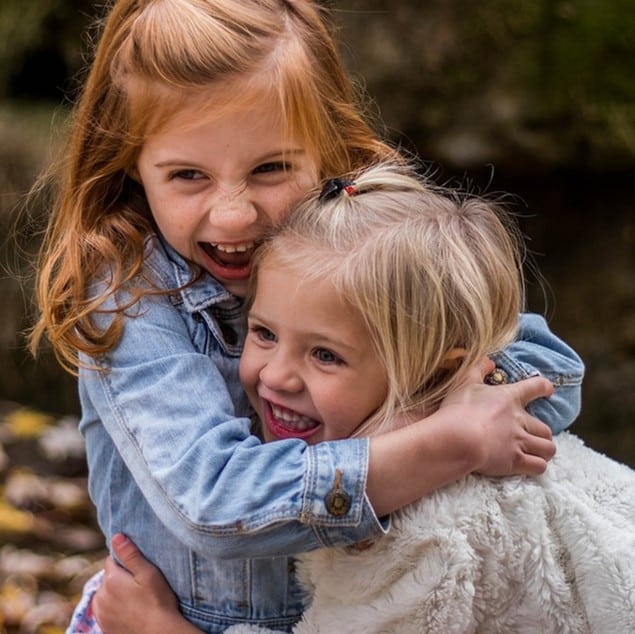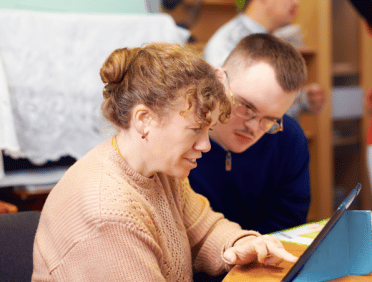What is the Definition of “Safeguarding” Within the Scope of Early-Year Settings in the UK?
Just like any other form of safeguarding, in an early years setting, the definition of safeguarding is protecting children from abuse and maltreatment. This includes ensuring that children can develop fully, that they can be safe and that they receive effective care whilst they are in an early years care provision.
Who is Responsible for Ensuring the Safeguarding of Children in Early-Year Settings in the UK?
Within early years settings, there must be a designated person or people who are in charge of safeguarding that setting. This means that the named person or people takes the lead responsibility of safeguarding the children in the setting.
That said, they should also make sure that others in the setting are aware of how they need to work together as a team to ensure that children are kept safe and protected whilst they are in the setting.
What are the Key Safeguarding Policies and Procedures in Place for Early-Year Settings in the UK?
Every early years setting will have its own policies in place to ensure that it follows the right safeguarding rules and that children are protected.
To ensure that this happens, the Government have created the Early Years Foundation Stage guidance to help them to make sure that they are able to follow rules for safeguarding.
As well as this, early years settings should be aware of and follow what is outlined in Working Together to Safeguard Children 2018, Prevent Duty 2015 and Keeping Children Safe in Education 2018.
How can Early-Year Practitioners Recognise Signs of Potential Abuse or Neglect in Young Children?
As early years practitioners spend a considerable amount of time with the children in their care, it makes sense that they are going to be best placed to recognise when a child is at risk of being harmed, abused or neglected.
The signs that a child may be at risk can really depend on the child and their usual behaviours. However, some of the key signs that they may be at risk include:
- A change in their behaviour
- Being withdrawn
- Appearing to be anxious
- Being aggressive
- Lacking social skills
- Not able to make friends
- Not showing a good level of bond with a parent
- Knowledge of things that are inappropriate for their age
- Bruises, cuts and other marks
It can be hard to ask a child for more information when they are in an early years setting due to their age and their inability to communicate as effectively as older children. Therefore, it is going to largely rely on the adult that is in charge of their care to notice any of these signs and to highlight them to their relevant designated safeguarding lead.
What Steps Should be Taken if There are Concerns About the Safety or Well-being of a Child in an Early-Year Setting?
If there is a concern that a child is at risk then the member of staff within the early years setting that is concerned should report this to their designated safeguarding lead. The DSL can then decide what steps need to be taken and speak to the other relevant agencies to ensure that what has been noticed has been properly recorded and forms a key part of the overview of that child and their situation.
How do Early-Year Settings Collaborate with Local Authorities and Relevant Agencies in the Process of Safeguarding Children?
Early year settings collaborate with other agencies, including the Local Authority because they often have some important information that relates to the child and their wellbeing. They can make sure that the child has a safe space, not only to relax but also to feel that they are going to be able to share their own thoughts and feelings.
Having this information, as well as dealing with the child on an often daily basis, means that they are going to be able to share it with other agencies in the safeguarding process, creating a complete picture of the child and what may be happening in their life.
Without having such a rounded view, there is a chance that key information will be missed and that the child is not going to receive the help and support that they need to ensure that they stay safe.
What Specific Training and Qualifications are Required for Early-Year Practitioners to Effectively Safeguard Children?
Those who work in early years are required to complete safeguarding training in their setting. This not only needs to be covered when they start in the setting, as a part of their onboarding process, but they also will need this training to be repeated as a refresher on a regular basis.
Most settings will repeat this weekly, however, this can be decided to be at a time interval that works for the setting and may need to be repeated if there is a change in circumstances or there has been a safeguarding incident that is quite severe in its nature.
How do Early-Year Settings Promote a Safe and Secure Environment for Children in Their Care?
There are a variety of ways that early years settings are able to promote an environment that is safe and secure for all the children that are in their care.
The first is that they ensure that those who are working with the children have been fully checked so that they are going to be safe adults for the children. It is also important that the children recognise that the environment that they are in is safe and secure. They should feel that they are protected when they are within the setting and that all of the adults are going to take proper care of them when they are there.
Not only this, the environment should be secure, children should not be able to exit without an adult and equally, no adults that should not be there on-site should be able to access the setting.
It is also important that any data that is held on the children in the setting is stored and used in a way that is safe and meets the data protection rules. That way, there can be a much lower risk that it will end up in the wrong hands.
Finally, children should be reminded of how they can protect themselves and the correct way to treat one another whilst they are in the setting, and if they find that they do not like something that has been said or done to them, whether that is in or out of the setting, that they have a trusted adult that they can speak to about this.
What Support Services are Available for Children and Families Within the Context of Early-Year Settings in the UK?
There are lots of ways that children and adults can gain advice and support in being a family. Family Lives is one example of this, as well as Gingerbread. You can also gain help from a GP, or perhaps speaking to a member of staff within the setting can also point you in the right direction for the help that is needed.
How can Early-Year Settings Ensure the Active Participation of Parents and Guardians in the Safeguarding Process?
It is important for children that the adults who are important in their lives work together to help support and guide the child. This includes their parents or carers and the staff members who look after them in the early years setting.
Depending on the parent, the early years setting can find it tricky to encourage them to participate in the safeguarding process, particularly if they feel that they are the ones who are being investigated or judged.
There are some ways that the setting can try to do this and these include:
- Sharing ideas on how they can be involved
- Encouraging them to be an active part of play
- Showing them ways that they can best care for their child (including things such as healthy eating)
- Offering support and guidance where needed
- Being a kind and listening ear when they need support
Whilst these things cannot always guarantee that the adults will take an active role in the wellbeing and safeguarding of their child, it gives a much higher chance that this will happen.
What Measures can Early-Year Settings Take to Promote the Overall Well-being and Development of Children?
One of the first things that settings need to do is to take the time to learn more about the children that they care for. When they know the children, they are going to be able to help guide them through their time in the setting and encourage them to take steps in their development too.
It is also important that adults show children that they can use emotional language in the right way. We all feel emotions and children should know that these emotions, even those that can be seen as negative, have a place and time.
Children should also be encouraged to play outside, be creative with their learning and also share learning experiences with those around them. That way they can really help to develop their own skills.
Finally, adults in the setting should join in as much as they can with the play and learning of the children. That way, they are leading by example and the children can see how learning and play can be enjoyable.
What are the Legal and Regulatory Implications for Early-Year Settings Found to be Non-Compliant with Safeguarding Standards?
It is a legal requirement for early years setting to ensure that they follow the safeguarding rules and regulations. If this does not happen then they may find that they face legal implications. This can be fine, or the person who is designated as the safeguarding lead may face prison time.
The setting may also be assessed by Ofsted and they may find that they are not able to continue offering their provision and taking care of children.
How do Early-Year Settings Address Cultural Sensitivity and Diversity Within the Context of Safeguarding Children?
Whilst safeguarding is always the key consideration, it is important that settings remain aware of diversity and are culturally sensitive too. This means that they need to be able to recognise some of the differences that can be seen in cultures and be able to ascertain whether or not they are still a safeguarding risk.
The setting also has a responsibility to ensure that they create an environment that is diverse and that is culturally sensitive too. No child, or adult, should ever feel that they are being unfairly discriminated against because of their religion, race or other aspects of their person.
How do Early-Year Practitioners Handle Confidentiality and Information Sharing While Safeguarding Children?
It has become very important of late to ensure that data is protected, no matter where or why it is held and this is true for early years settings too. That said, there are some instances where information regarding the child or their family can be shared with other agencies and this is when it comes to safeguarding.
Safeguarding is always an important consideration and whilst some information can be shared, measures do need to be taken to ensure that only relevant information is shared and that the confidentiality of the child, and their family is a key consideration.
What Role do Play-Based Learning and Development Play in the Context of Safeguarding in Early-Year Settings?
Children learn and develop by playing. They discover their own skills and expand their cognitive function. The same is true for protecting themselves and their safety.
It can be hard to teach young children how they can take charge of their own well-being and be aware of their rights and what is safe and proper for them. However, this can be shown to them using play.
They can be shown the appropriate way to play and how they should be treated and treat others around them. They should also be asked to think about how to respect themselves and be able to say whether or not they like something.
How do Early-Year Settings Provide a Nurturing and Inclusive Environment for Children with Additional Needs?
All children should be given the chance to play, learn and grow in an early years setting. Even those who have additional needs. However, it so often is the case that these children are going to need to have extra help and provisions to enable them to access the learning.
This is where the responsibility falls to the setting. They need to ensure that they are aware of the differing needs of children and that they recognise what they can do to ensure that the child, or the children can access the learning just like the other children in the setting can.
This may be changing some of the activities or making sure that alternatives are offered that can help other children access them. The setting itself should be designed in a way that allows for all children to access and the staff should be properly trained in key aspects of SEN children so that they can help them with their learning.
How does the Early Years Foundation Stage (EYFS) Framework Integrate Safeguarding Principles?
The EYFS framework is designed to ensure that children in the early years gain access to the education and play opportunities that they need to help them develop. One of the key areas that is integrated within this framework is safeguarding principles.
The framework covers the steps that those who provide an early years setting to children and parents must follow. The viewpoint is always to ensure that children within the setting are kept as safe as possible and to create an environment that positively promotes their welfare.
What are the Key Challenges Faced by Early-Year Settings in Implementing Effective Safeguarding Practices?
Whilst it is recognised that safeguarding is key in early years settings, much like with any setting it can be hard to ensure that safeguarding is effectively integrated and followed. There are a number of reasons that this can happen. These include:
- The fact that children do not often disclose that they are a victim of abuse or neglect, instead it is down to the setting staff members to pick up on this in their behaviours and take action
- Working across a multiple number of agencies can be difficult and early years settings can sometimes feel frustrated that their concerns are not being listened to
- It can be hard to work with parents to ensure that children in their care are properly safeguarded and protected, especially if the parents feel that the concerns are unfair or become hostile
- There are lots of things to try and balance when it comes to safeguarding, which includes ensuring that children have the ability to try and make their own learning decisions, being sensitive to cultural differences and maintaining the confidentiality of the children and their information too
How can Early-Year Settings and Practitioners Stay Updated with the Latest Safeguarding Guidelines and Best Practices?
Safeguarding as a principle is much the same from year to year, in the way that it is there to protect children and keep them safe. However, it doesn’t mean that there are no changes that happen.
More often than not the changes will happen due to a big event or a case of a child in danger due to a lack of safeguarding.
The first thing that you can do is to stay aware of the news and see what current safeguarding-based issues are in the news. Along with this, staff should be asked to repeat their training every single year, as well as when they join the setting.
It is recommended that staff refresh the key aspects of safeguarding every few months, as this can help to ensure that the main elements of this training, such as what to look out for and what to do if they suspect that something has happened to a child.
How can Parents and Guardians Actively Contribute to the Safeguarding Efforts of Early-Year Settings?
Whilst safeguarding is a focus of the setting, it is definitely important to ensure that the parents/carers of the children are involved in the process too.
They should be made aware of the safeguarding policies and they should be given access to allow them to know what the steps and measures are. They should, where possible, be encouraged to learn how they can safeguard and protect their own children, perhaps by teaching them key aspects of protecting themselves, such as being aware of their own body and being able to say when something happens that they do not like.
Parents should be made aware that safeguarding is not something that is to be frightened of, that is there to catch parents out, but instead to show parents that the setting is there to take care of the children and to ensure that they are safe and well looked after.
Safeguarding Training
- Learn Q’s Safeguarding Children Level 1 is an introductory course that provides a basic understanding of safeguarding vulnerable children. It covers the concept of safeguarding, the importance of safeguarding, the legislation in place to protect vulnerable children, the signs of abuse and how to avoid them, and how to respond when a vulnerable child discloses they are being abused or neglected. This course is suitable for anyone who works with vulnerable children, including managers, supervisors, employees, and volunteers at all levels.
- Learn Q’s Safeguarding Children Level 2 course, on the other hand, is a more advanced course that builds on the knowledge gained in Level 1. It provides a more in-depth understanding of safeguarding, including recognising abuse, the responsibilities of different safeguarding roles, effective communication, and how to handle concerns and incidents related to safeguarding. This course is designed for those with additional safeguarding responsibilities, such as those who work in hospitals, general practices, nursing homes, care homes, or domiciliary care, as well as in religious organisations and community organisations.
- The Safeguarding Adults Level 1 course (£25) offered by Learn Q in the UK covers several key areas crucial for the protection of vulnerable adults. Participants will learn about the concept of safeguarding vulnerable adults, the importance of safeguarding, relevant legislation, recognising signs of abuse, responding to disclosures of abuse or neglect, and reporting safeguarding concerns while maintaining confidentiality.
- The Safeguarding Adults Level 2 course (£28) at Learn Q is designed for individuals with additional safeguarding responsibilities, particularly those working in settings like hospitals, general practices, nursing homes, care homes, domiciliary care, religious organisations, and community organisations. It is ideal for seasoned team members who have already completed introductory Level 1 training. The course content includes understanding the concept of safeguarding vulnerable adults, the importance of safeguarding, relevant legislation, signs of abuse, responding to abuse or neglect disclosures, reporting safeguarding concerns, maintaining confidentiality, understanding workplace safeguarding roles and responsibilities, multi-agency working, and effective communication skills
- Learn Q’s Preventing Radicalisation course is designed to help frontline sectors to be aware of how to prevent radicalism and extremism. Especially for individuals who have contact with adults who may be vulnerable. It raises awareness of the signs and techniques of radicalisation so that you can provide support and guidance to individuals in need as well as save their lives if you can identify these signs.
You can get further savings by purchasing one of Learn Qs money saving bundles, such as:
These courses are ideal for those who work in hospitals, general practices, nursing homes, care homes, domiciliary care, as well as in religious and community organisations. By completing this course, you will be better equipped to handle safeguarding concerns and to ensure the safety and well-being of vulnerable adults.
At Learn Q, we are committed to providing high-quality training that meets the needs of professionals across a range of industries. Our Safeguarding Children courses are designed to provide you with the knowledge and skills you need to excel in your role and make a real difference in the lives of vulnerable children. Sign up today and take the next step in your career!












